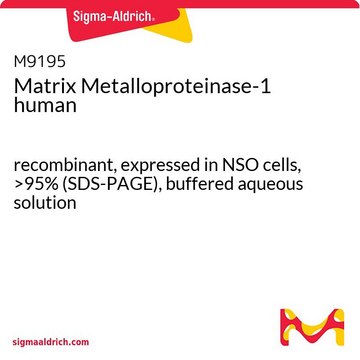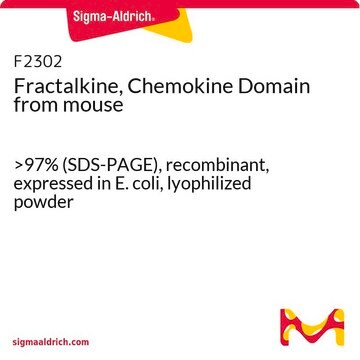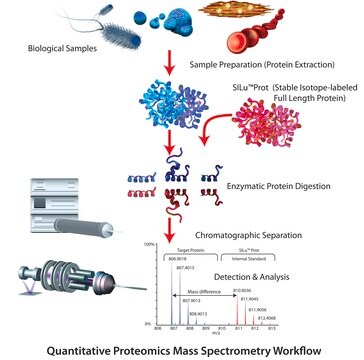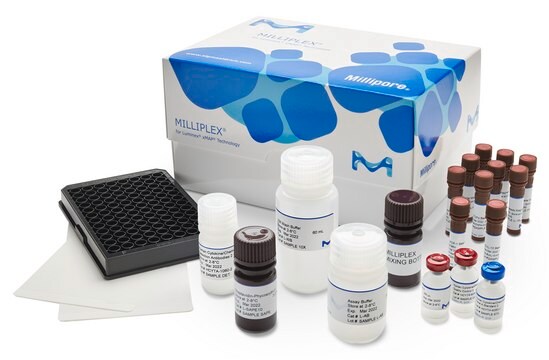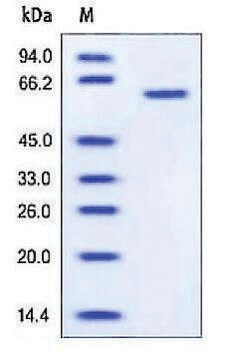Wichtige Dokumente
MSST0035
SILu™Prot CCL2 C-C motif chemokine 2 human
SIL MS Protein Standard, 13C and 15N-labeled
Synonym(e):
HC11, Monocyte chemoattractant protein 1, Monocyte chemotactic protein 1(MCP-1), Monocyte secretory protein JE, Monocytechemoattractantprotein1, Monocytechemotacticandactivatingfactor(MCAF), Small-inducible cytokine A2
About This Item
Empfohlene Produkte
Biologische Quelle
human
Qualitätsniveau
Assay
≥98% (SDS-PAGE)
Form
lyophilized powder
Wirksamkeit
≥98% Heavy amino acids incorporation efficiency by MS
Methode(n)
mass spectrometry (MS): suitable
Eignung
suitable for mass spectrometry (standard)
UniProt-Hinterlegungsnummer
Lagertemp.
−20°C
Angaben zum Gen
human ... CCL2(6347)
Allgemeine Beschreibung
Immunogen
Biochem./physiol. Wirkung
Physikalische Form
Rechtliche Hinweise
Lagerklassenschlüssel
11 - Combustible Solids
WGK
WGK 2
Flammpunkt (°F)
Not applicable
Flammpunkt (°C)
Not applicable
Hier finden Sie alle aktuellen Versionen:
Analysenzertifikate (COA)
Die passende Version wird nicht angezeigt?
Wenn Sie eine bestimmte Version benötigen, können Sie anhand der Lot- oder Chargennummer nach einem spezifischen Zertifikat suchen.
Besitzen Sie dieses Produkt bereits?
In der Dokumentenbibliothek finden Sie die Dokumentation zu den Produkten, die Sie kürzlich erworben haben.
Unser Team von Wissenschaftlern verfügt über Erfahrung in allen Forschungsbereichen einschließlich Life Science, Materialwissenschaften, chemischer Synthese, Chromatographie, Analytik und vielen mehr..
Setzen Sie sich mit dem technischen Dienst in Verbindung.